3. Substance and Shadow: Business as Usual
The Fair’s display of corporate innovation masked simultaneous participation in government war production and profit.(1) As the Fair highlighted American industry as the manifestation of the themes of Democracy and Progress, many of the participating companies (2) were trading with Nazi Germany, with some of the corporate leaders even outright Nazi sympathizers. Today’s corporate and cultural economies are likewise both light and shadow, a mix of consumer market products and war materiel and technology, and often entwining philanthropy with a corporation’s special interests—for example, the Metropolitan Museum and the NYPL are both heavily funded by the Koch (3) family. Corporations have gained considerable political influence via The Citizen’s United (4) 2010 ruling: Political speech is indispensable to decision making in a democracy and this is no less true because the speech comes from a corporation rather than an individual.
(1939 Fair participants, partial list)
American Medical Association
American Telegraph and Telephone (ATT)
Bakelite
Bayer Company, Inc. (5)
Borden
Ciba Pharmaceuticals
Coca Cola
Consolidated Edison
Dupont
Eastman Kodak
Eli Lilly and Co.
Ford Motors (6)
General Electric
General Motors Corporation (7)
Gerber Products Co.
IBM (8)
ITT
Mean, Johnson and Co.
Ozalid Oil Company
Parke, Davis and Co.
Radio Corporation of America (RCA)
E.R. Squibb and Sons
United States Steel
Westinghouse
Winthrop Chemical Co.
American Medical Association
American Telegraph and Telephone (ATT)
Bakelite
Bayer Company, Inc. (5)
Borden
Ciba Pharmaceuticals
Coca Cola
Consolidated Edison
Dupont
Eastman Kodak
Eli Lilly and Co.
Ford Motors (6)
General Electric
General Motors Corporation (7)
Gerber Products Co.
IBM (8)
ITT
Mean, Johnson and Co.
Ozalid Oil Company
Parke, Davis and Co.
Radio Corporation of America (RCA)
E.R. Squibb and Sons
United States Steel
Westinghouse
Winthrop Chemical Co.


During World War II the Westinghouse Electric and Manufacturing Company manufactured more than 8,000 different products, while its Research Laboratories made critical breakthroughs in plastics, radar, x-rays, bombsights, and atomic energy. Research laboratories contributed to significant improvements in radar, created gyroscopic stabilization device that improved the accuracy of tank guns, and built the first American-designed jet engine.
Westinghouse also came up with a liner with factory applied sprayed on camouflage for use in the jungles of the Pacific.
Both General Motors and Ford insist that they bear little or no responsibility for the operations of their German subsidiaries, which controlled 70 percent of the German car market at the outbreak of war in 1939 and rapidly retooled themselves to become suppliers of war materiel to the German army. (washingtonpost.com/archive)



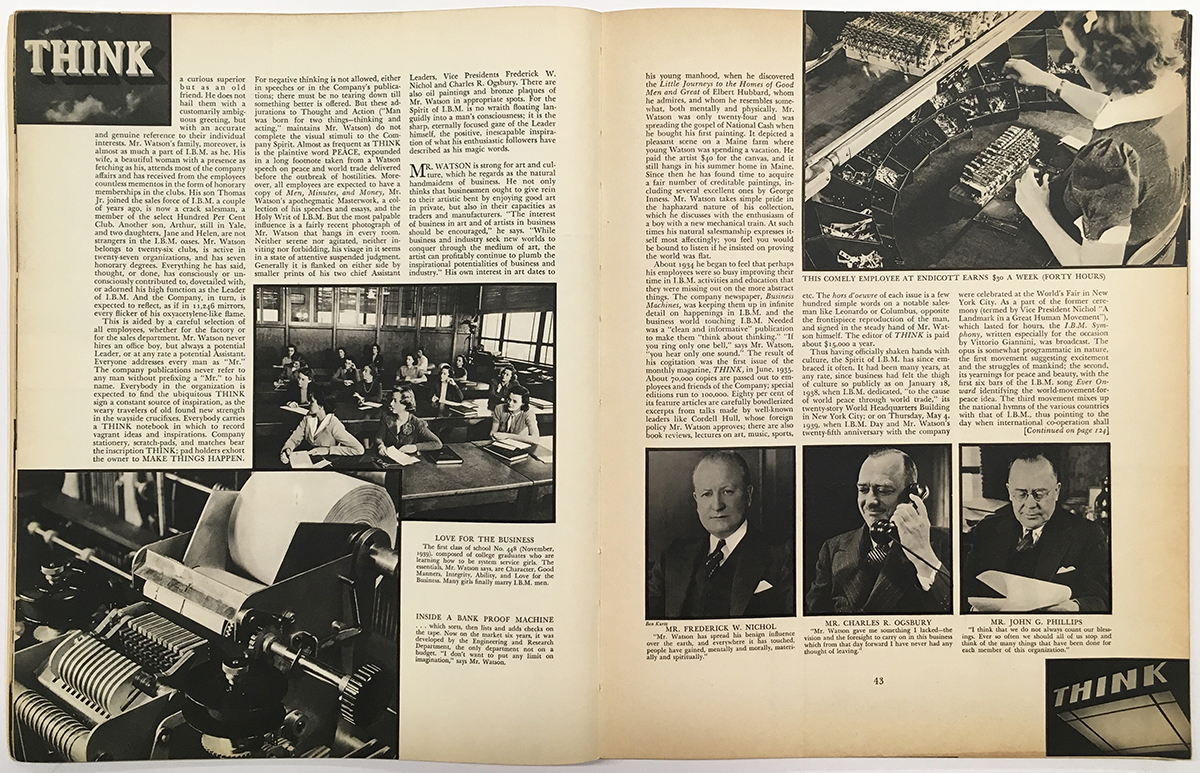
(above) Fortune Magazine’s 1939 profile of IBM and its leader, Thomas Watson. IBM is one of the many companies whose pre-war trade with Germany developed into activities implicating the company with aiding the Nazis carry out the Holocaust.
“IBM and the Holocaust: The Strategic Alliance between Nazi Germany and America's Most Powerful Corporation” is a book by investigative journalist Edwin Black which details the business dealings of the American-based multinational corporation International Business Machines (IBM) and its German and other European subsidiaries with the government of Adolf Hitler during the 1930s and the years of World War II. In the book, published in 2001, Black outlined the way in which IBM's technology helped facilitate Nazi genocide through generation and tabulation of punch cards based upon national census data.
“IBM and the Holocaust: The Strategic Alliance between Nazi Germany and America's Most Powerful Corporation” is a book by investigative journalist Edwin Black which details the business dealings of the American-based multinational corporation International Business Machines (IBM) and its German and other European subsidiaries with the government of Adolf Hitler during the 1930s and the years of World War II. In the book, published in 2001, Black outlined the way in which IBM's technology helped facilitate Nazi genocide through generation and tabulation of punch cards based upon national census data.
Data generated by means of counting and alphabetization equipment supplied by IBM through its German and other national subsidiaries was instrumental in the efforts of the German government to concentrate and ultimately destroy ethnic Jewish populations across Europe. Black reports that every Nazi concentration camp maintained its own Hollerith-Abteilung (Hollerith Department), assigned with keeping tabs on inmates through use of IBM's punchcard technology. (Wikipedia synopsis of book)
(below) Fortune Magazine’s 1939 profile of Standard Oil (NJ) and excerpt from The American Chronicle’s article, The Treason of Rockefeller Standard Oil During WWII: (9) Standard Oil had withheld patents from the US Navy which had been supplied to the Nazis. Worse yet, [they] had been supplying the Luftwaffe and German Navy gasoline and tetraethyl lead ...
(below) Fortune Magazine’s 1939 profile of Standard Oil (NJ) and excerpt from The American Chronicle’s article, The Treason of Rockefeller Standard Oil During WWII: (9) Standard Oil had withheld patents from the US Navy which had been supplied to the Nazis. Worse yet, [they] had been supplying the Luftwaffe and German Navy gasoline and tetraethyl lead ...

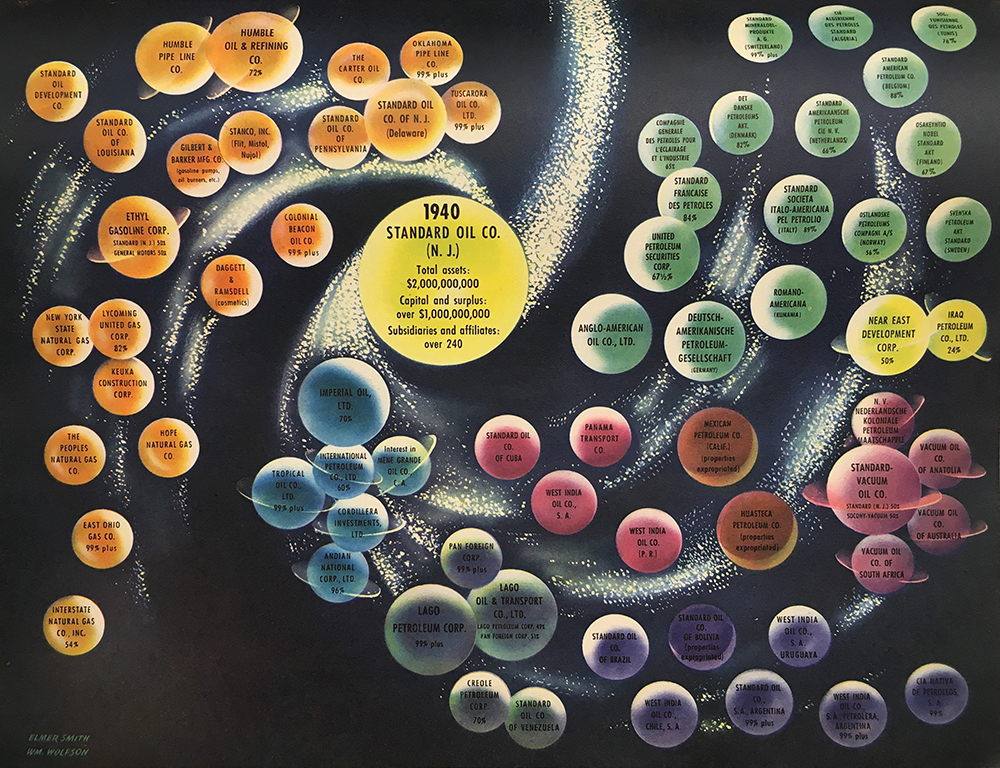

(Unfinished) Business
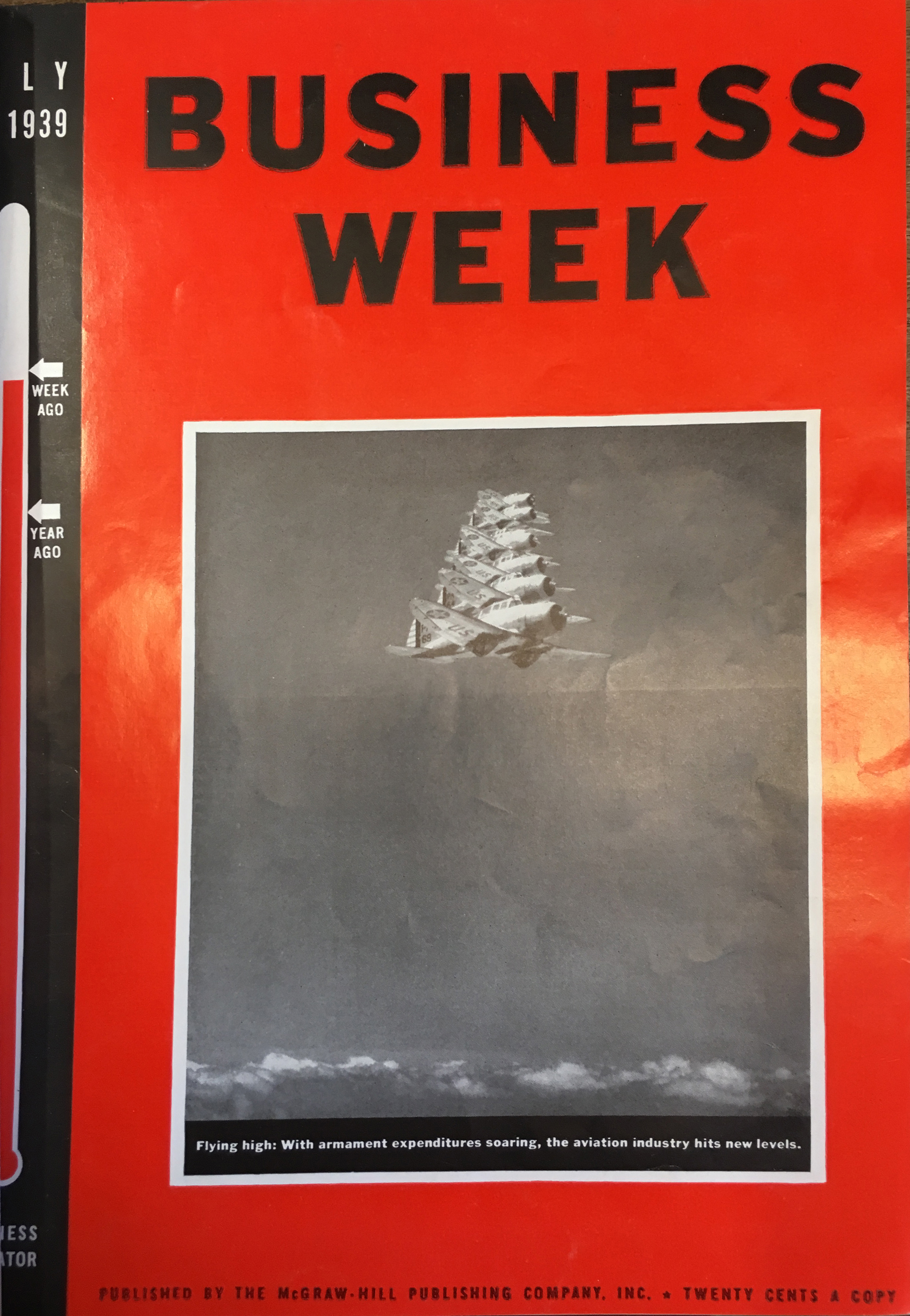



Business magazines of the time (Fortune and Business Week) visibly track 1939's complex issues: to render a sense of the American zeitgeist, they solicited and displayed views on political ideology and leadership, isolationism and global trade, resource access and extraction, tax and regulation, and international immigration. Fortune was first to publish the results of public polling, which had no real prior graphic visibility in periodicals of the time.
Many of the designers of printed ephemera for the World’s Fair were likely employed by corporate design studios and ad agencies, as well as the publishers of these magazines. (McGraw Hill published Business Week; the affinities and points of view of these publishers is worth closer examination, given McGraw Hill’s (10) subsequent tendency to distort American history in their widely-distributed textbooks.)
The World’s Fair manifested the sometimes uneasy balance between business interests promoted by public relations men like Bernays, and FDR’s New Deal progressive public policy vision for the future. In many respects, we now (11) find ourselves in an historical echo chamber.









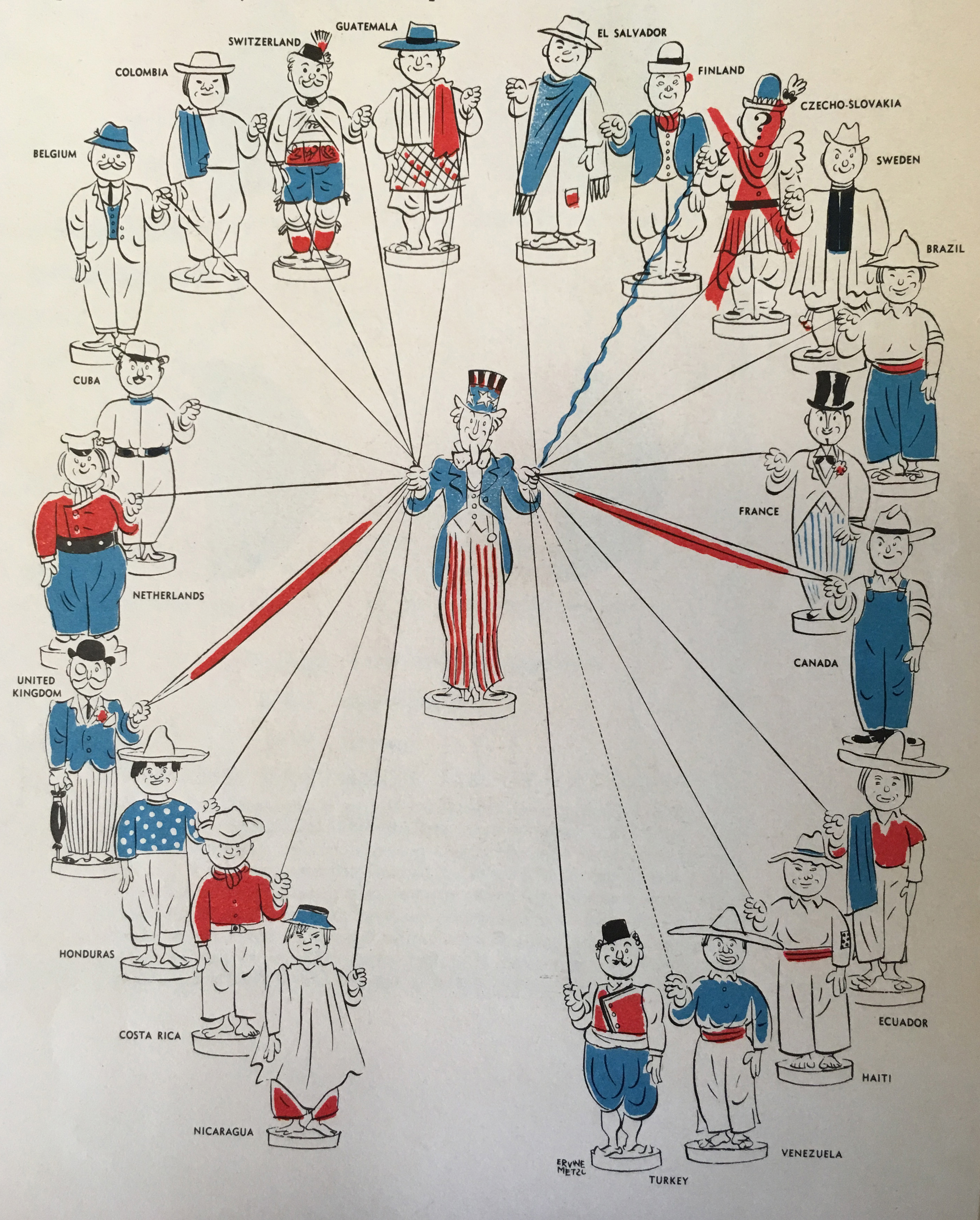
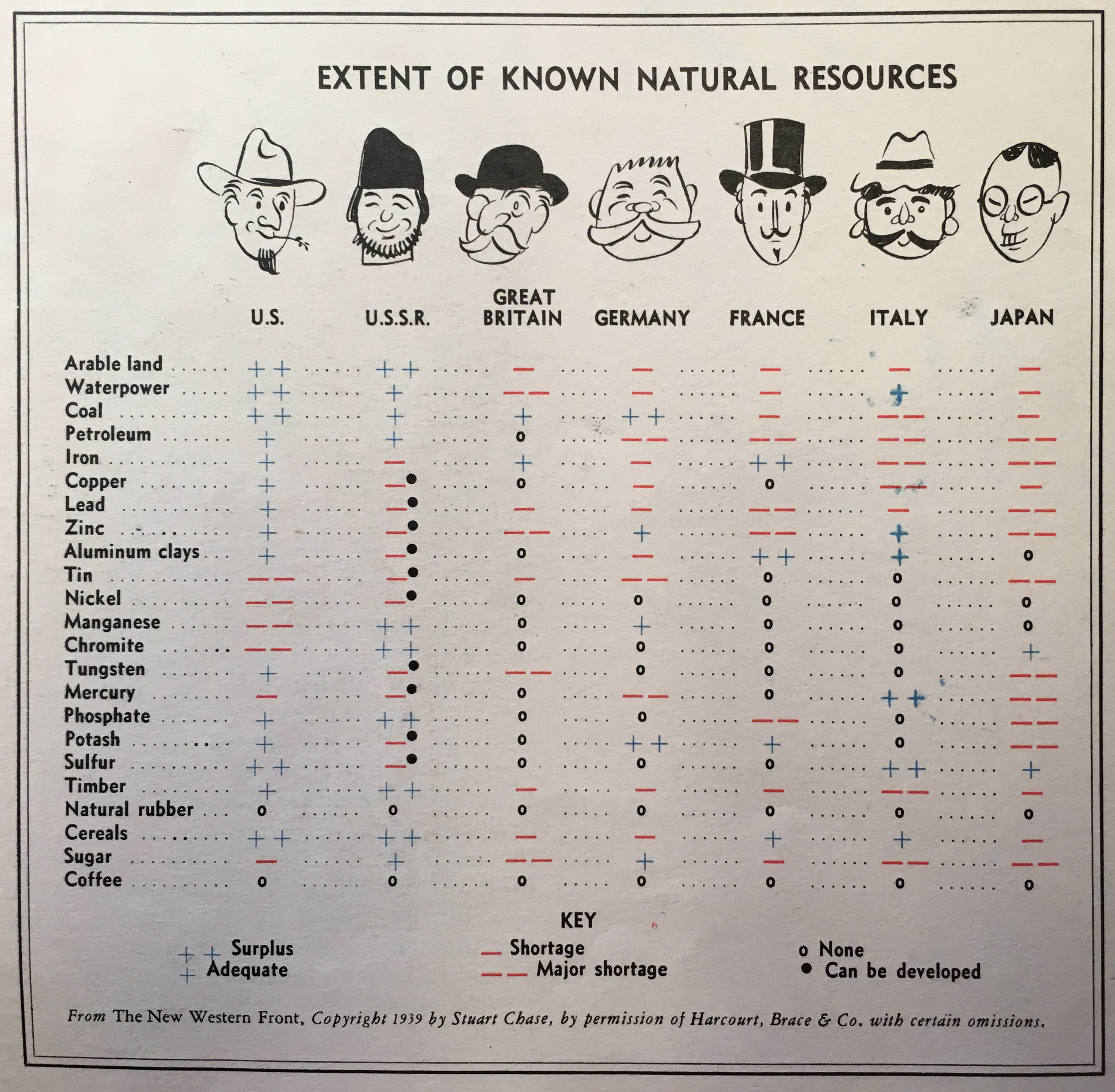
Oct. 1939 Fortune cover depicts the corporate round table; and editorial illustration shows the US holding the reins of international trade; chart of comparative natural resources of the key players in the prelude to WWII, with information credited to The New Western Front by Stuart Chase, Harcourt & Brace Co., 1939. (See present-day trade tarrifs information graphic,(12) New York Times, July 11, 2018) All images from Brown University Rockefeller Library’s bound periodicals, 1939 Business Week and Fortune magazines.
Visual Display
The dynamic graphic design of 1939 is irresistable as a source of inspiration for typography, gravure printing, saturated color, information design, and photocollage. As with the Fair’s graphic materials, the visual explanations of global networks and manufacturing processes are seductive; a diagram of a mortar shell reads, “This lethal work of art costs $12.” Dynamic visual display of today’s global network reveals fluid relationships between resources, capital, and international exchange; for example, the offshore economies revealed in the International Consortium of Investigative Journalists’s Paradise Papers narrative demand new forms of relational storytelling. (13)





Fortune Magazine information graphics of munitions production, and details from a map of the 1939 global communications network: note the question mark on an outlined (invaded) Poland.The Oct. 1939 Fortune magazine also charted speculations on Nazism’s effects on the German economy.

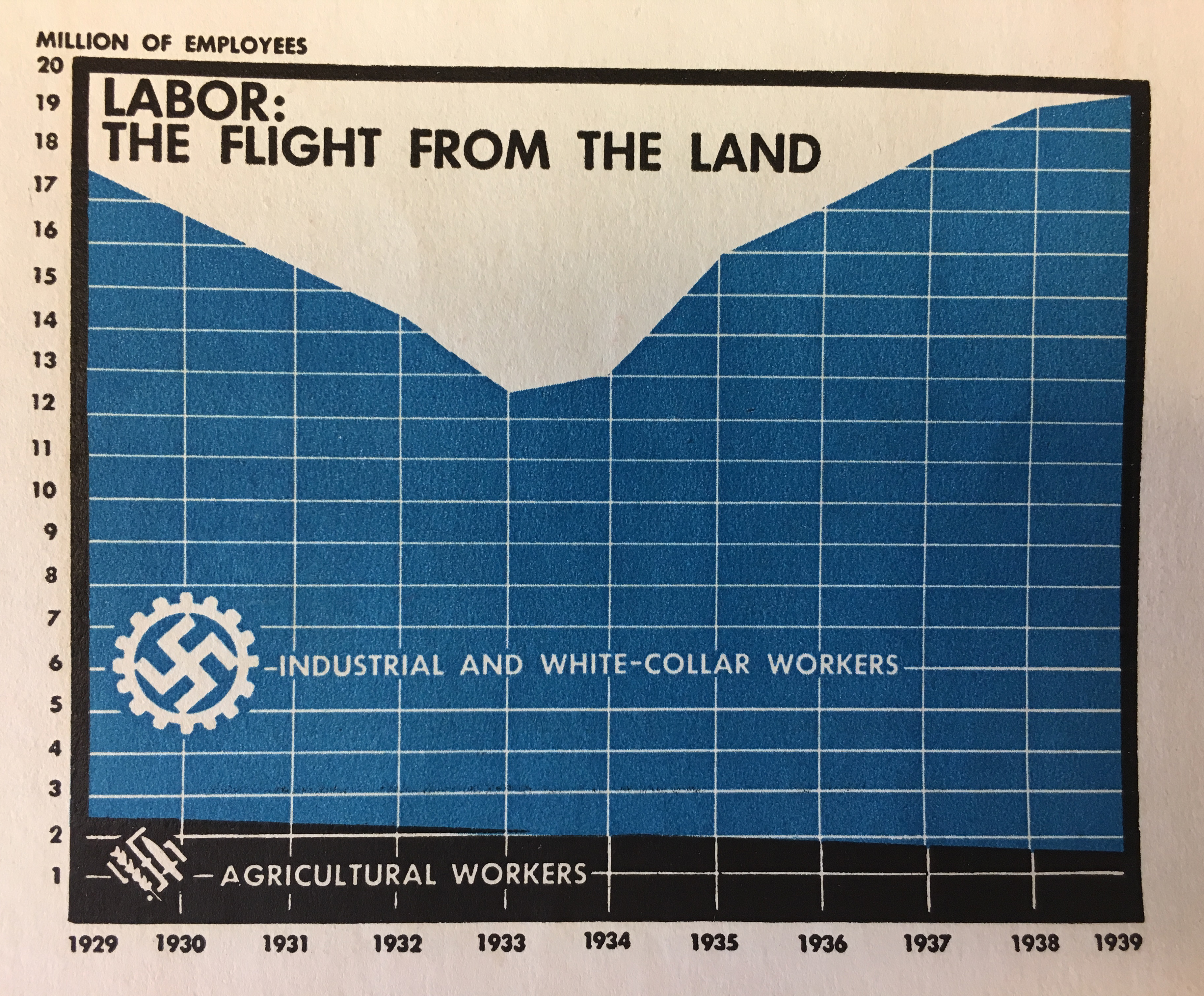
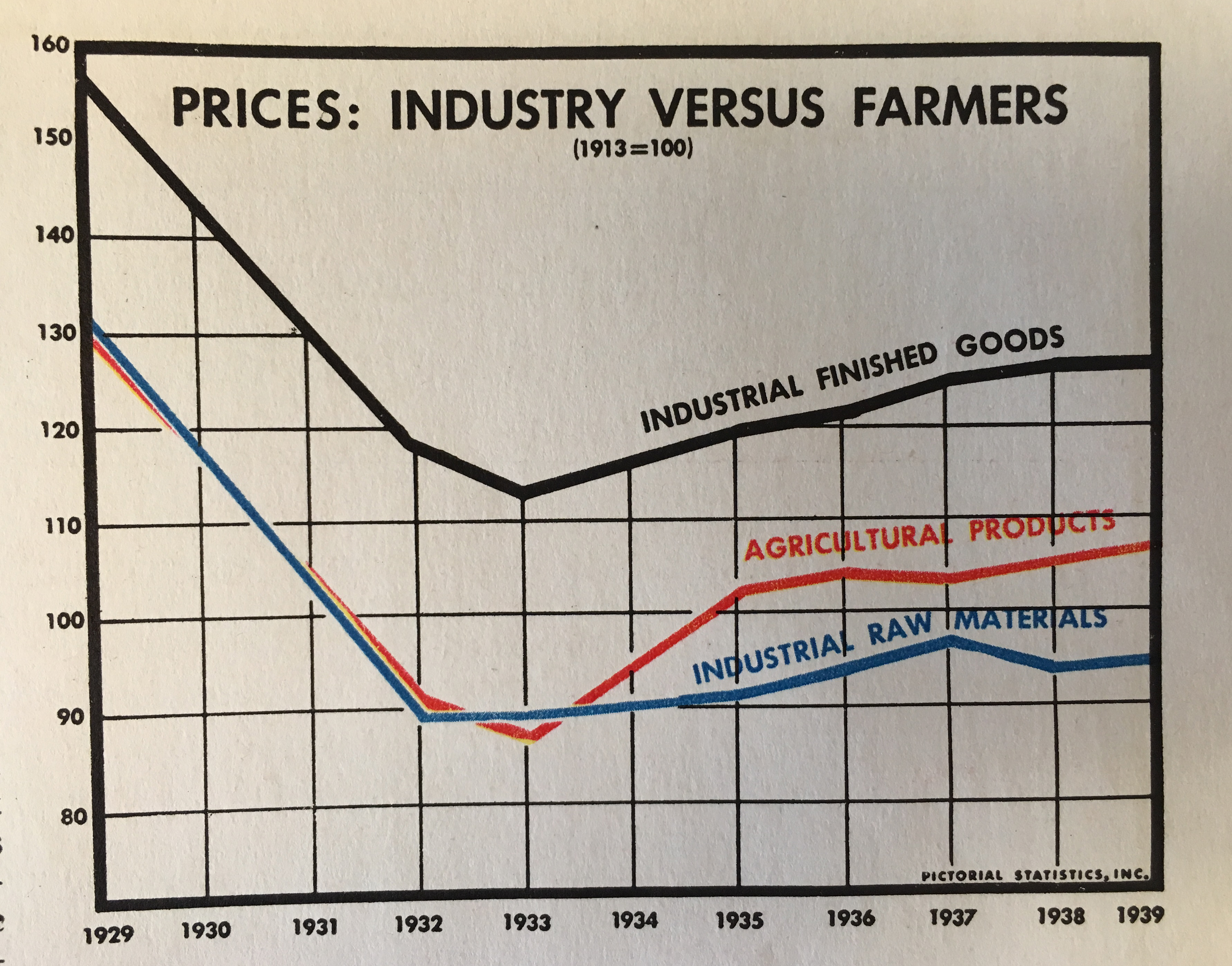

Fortune displays the ultimate identity design (14) program; the design of the layout is itself a visual rhyme with the corporate organizational chart.

Notes/links: (1) Big Money Rules, Diane Ravitch, NY Review of Books; (2) Profits über Alles! American Corporations and Hitler, Dr. Jacques Pauwels, Centre for Research on Globalization; (3) Six Companies Owned by the Koch Brothers, Nathan Reiff, Investopedia; (4) Citizens United v. Federal Elections Commission, Oyez Supreme Court Resources; (5) Bayer-Monsanto Merger Can’t Erase Nazi Chemists’ Past, Victor Grossman, People’s World; (6) Ford and GM Scrutinized for Alleged Nazi Collaboration, Michael Dobbs, Washington Post Archive; (7) Tank Development at GM in WW2, King Rose Archives; (8) IBM and the Holocaust: The Strategic Alliance Between Nazi Germany and America’s Most Powerful Corporation, Edwin Black; (9) The Treason of Rockefeller Standard Oil Company (Exxon) During WWII, The American Chronicle; (10) History Class and the Fictions about Race in America, Alia Wong, The Atlantic; (11) The Post WW2 Order is Under Assault by Those Who Built It, Peter S. Goodman, NYT; (12) How Trump’s Trade War Went from 18 Products to 10,000, Keith Collins and Jasmine C. Lee, NYT; (13) The Influencers, ICIJ; (14) Hitler as Art Director: What The Nazi’s Style Guide Says about the ‘Power of Design’, CBS News’s Jim Edwards interviews design historian Steven Heller